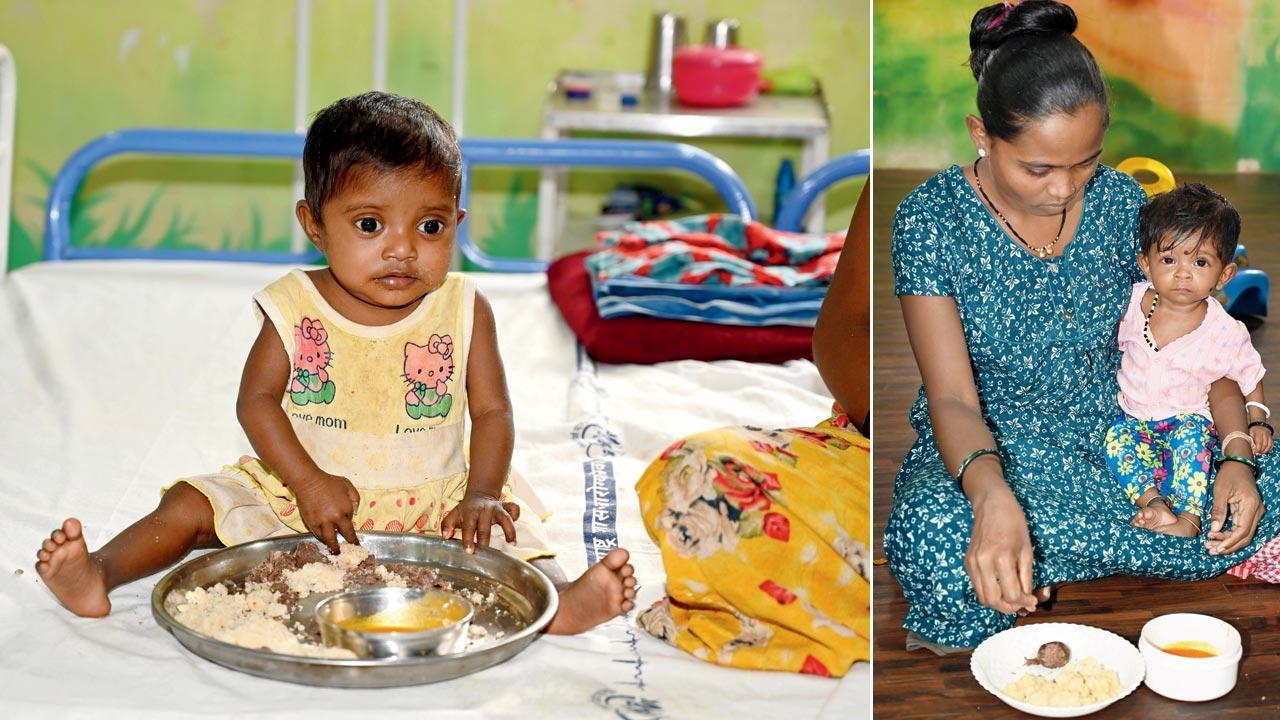Home / Sunday-mid-day / / Article /
Why Palghar’s children continue to die
Updated On: 10 September, 2023 07:32 AM IST | Palghar | Diwakar Sharma
The latest government data pegs kids with severe malnutrition and highest risk of death at 166; 32 have already died this year in Jawhar alone. Why are residents struggling to feed their children and livestock despite generous free grain schemes?

One-and-a-half-year-old Vidya Jayaram Koti, who has been admitted to the Nutrition Rehabilitation Centre in Mokhada taluka, is currently critical. She weighs 4.5 kg, when her ideal weight should have been over 10 kg. Eight-month-old Sarthak Salkar, who weighs 4.5 kg, came to centre with his mum Sangeeta on August 23. “But it’s been over 10 days, and he has only gained 0.1 kg,” his mum shared. Pics/Hanif Patel
The tiny, 20-bed Nutrition Rehabilitation Centre (NRC) in the Mokhada taluka of Palghar is crammed with children and their young mothers. The yellow walls are adorned with attractive drawings—a towering giraffe and young fawn reminiscent of Disney’s Bambi are seen looking either way; there are also paintings of “dancing” greens—broccoli, bottle gourd and capsicums—carrots, tomato, brinjal and pumpkin. In another artwork, five children are seen flaunting vegetable masks. Everything is meant to focus on healthy eating and nutritious food. But the 11 children at the centre might barely be able to identify with the messaging—they have probably never even eaten
these veggies.
The children, all between ages one and five, have been admitted to the centre, because they are malnourished.




